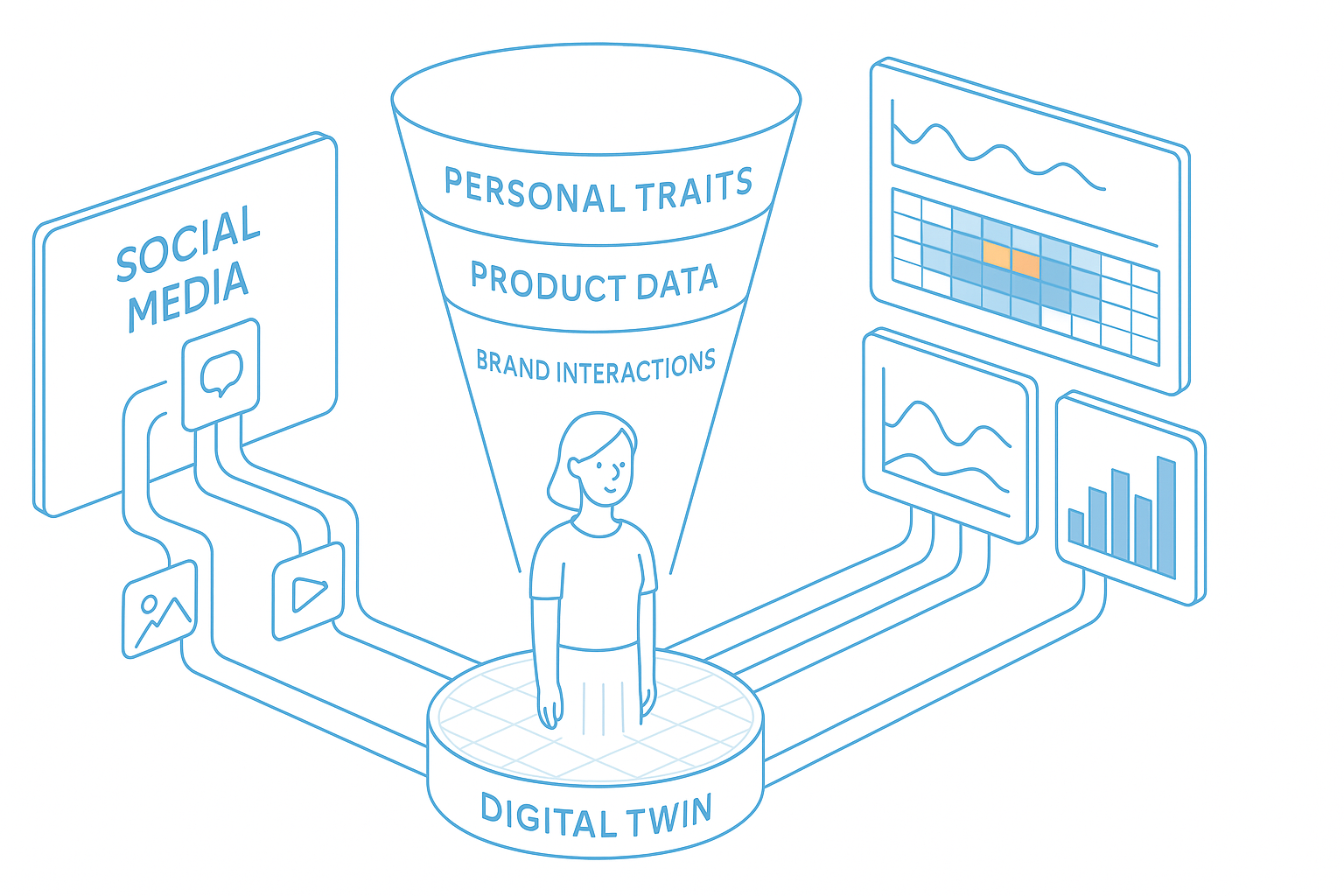What Are Digital Twins?
Digital twins in consumer analytics are virtual representations that mirror real-world consumer segments in real-time. Each social digital twin is an instance of a segment, continuously updated with the latest data about that segment's behaviors, preferences, and interactions.
Unlike static consumer profiles, digital twins evolve as their real-world counterparts change, providing marketers with living models that accurately reflect current segment characteristics. This technology transforms how brands understand and engage with their target audiences.
How Digital Twins Work
Digital twins are created by mapping the three dimensions of segmentation (Personal Attributes, Products Used, and Brand Affinities) to virtual models that can be analyzed and interacted with:
- Data Ingestion: Continuous streams of social media data, including images, videos, and metadata, feed into the digital twin
- Attribute Mapping: Object detection and AI analysis identify and categorize personal attributes, product usage, and brand interactions
- Model Synchronization: The digital twin updates in real-time to reflect changes in the segment it represents
- Insight Generation: Analytics tools surface trends, predict behaviors, and identify opportunities within the segment
Digital Twins vs. Traditional Segmentation
While traditional segmentation methods create static snapshots of consumer groups, digital twins offer dynamic, living representations:
- Real-time vs. Periodic: Digital twins update continuously, while traditional segments are refreshed periodically
- Granular vs. Broad: Twins can represent micro-segments with precision, not just broad categories
- Predictive vs. Descriptive: Twins can forecast future behaviors, not just describe current ones
- Interactive vs. Static: Marketers can run simulations on twins to test different scenarios
Applications of Digital Twins
Digital twins enable powerful applications across the marketing lifecycle:
- Product Development: Test concepts with digital twins before physical prototyping
- Campaign Optimization: Simulate campaign reception across different segments
- Trend Forecasting: Identify emerging behaviors before they become mainstream
- Personalization: Create hyper-relevant content for each segment instance
- Customer Journey Mapping: Understand and optimize each touchpoint for specific segments

